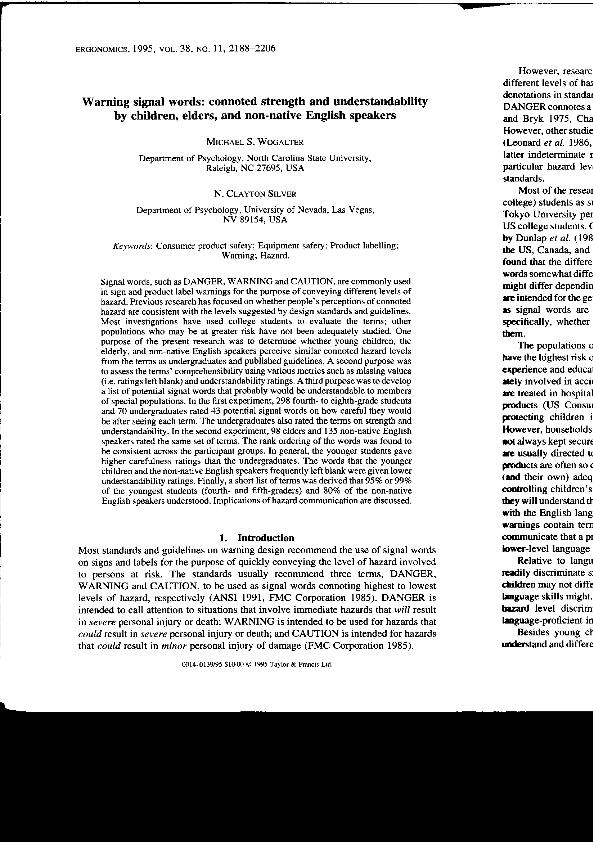Warning signal words : connoted strength and understandability by children, elders, and non-native English speakers

Contenido multimedia no disponible por derechos de autor o por acceso restringido. Contacte con la institución para más información.
| Tag | 1 | 2 | Value |
|---|---|---|---|
| LDR | 00000nab a2200000 i 4500 | ||
| 001 | MAP20071025227 | ||
| 003 | MAP | ||
| 005 | 20080418121146.0 | ||
| 007 | hzruuu---uuuu | ||
| 008 | 960628e19951101gbr|||| | |00010|eng d | ||
| 040 | $aMAP$bspa | ||
| 084 | $a875 | ||
| 100 | 1 | $0MAPA20080276768$aWogalter, Michael S. | |
| 245 | 1 | 0 | $aWarning signal words$b: connoted strength and understandability by children, elders, and non-native English speakers$cMichael S. Wogalter, N. Clayton Silver |
| 520 | $aThe purposes of the present research are threefold. The first is to determine whether signal words are interpreted by grade-school children, the elderly and non-native English speakers in the same manner as college students. It is hypothesized that the interpretations of these groups will reflect the denoted definitions prescribed in warning design guidelines and standards. The second purpose is to examine the understability of signals words. The third purpose is to develop a concise list of terms that most individuals who are less skilled with the English language are likely to know and understand | ||
| 650 | 1 | 1 | $0MAPA20080550653$aErgonomía |
| 650 | 1 | 1 | $0MAPA20080608460$aSeguridad de productos |
| 650 | 1 | 1 | $0MAPA20080554293$aEtiquetado |
| 650 | 1 | 1 | $0MAPA20080540814$aDiseño |
| 650 | 1 | 1 | $0MAPA20080600389$aComportamiento humano |
| 650 | 1 | 1 | $0MAPA20080564360$aTerminología |
| 700 | 1 | $0MAPA20080233044$aSilver, N. Clayton | |
| 740 | 0 | $aErgonomics | |
| 773 | 0 | $tErgonomics$dLondon and Washington$gVol. 38, nº 11, November, 1995 ; p. 2188-2206 |

